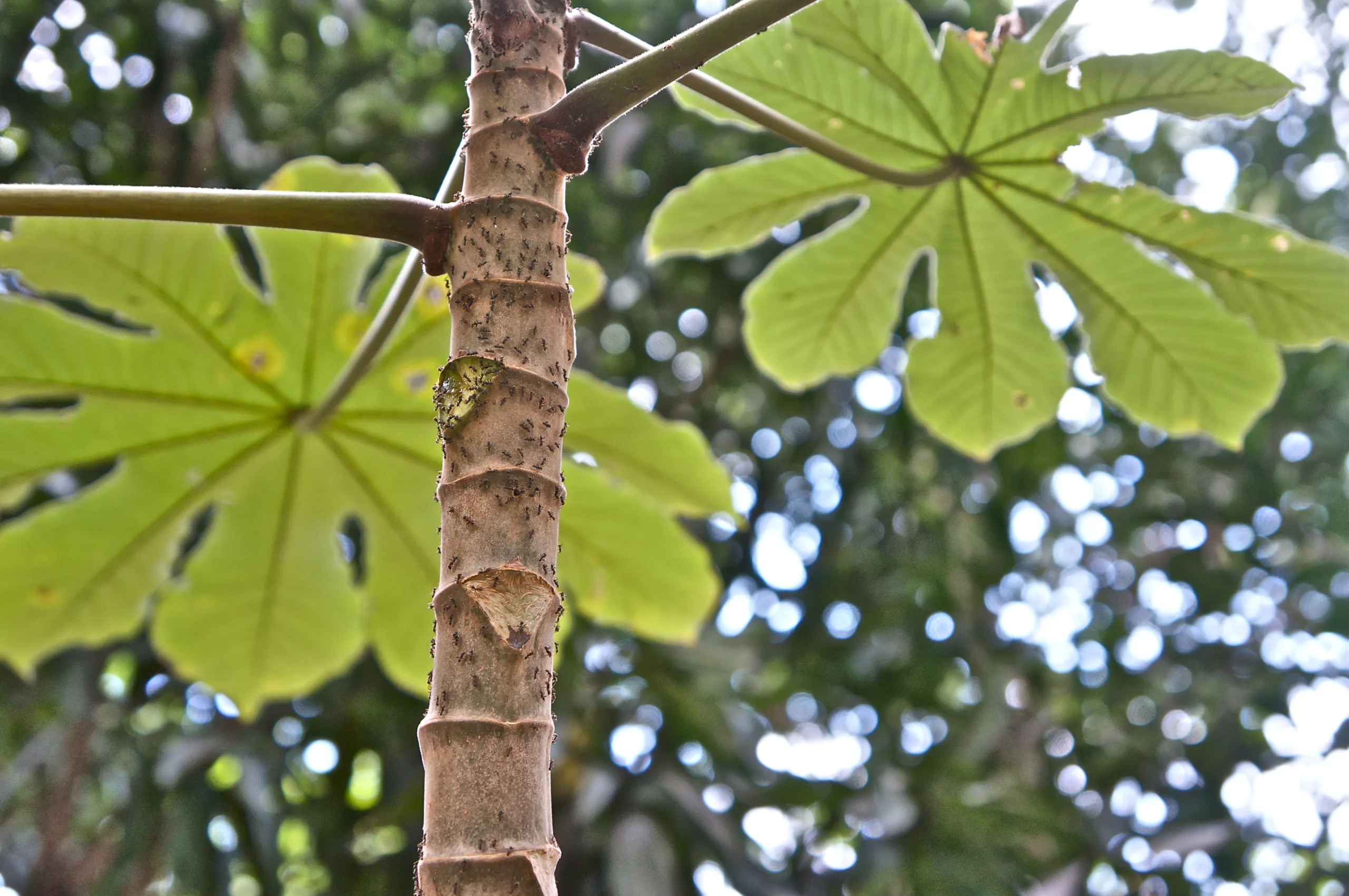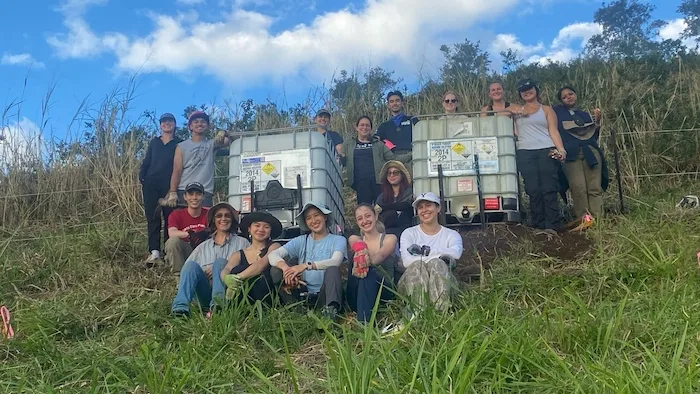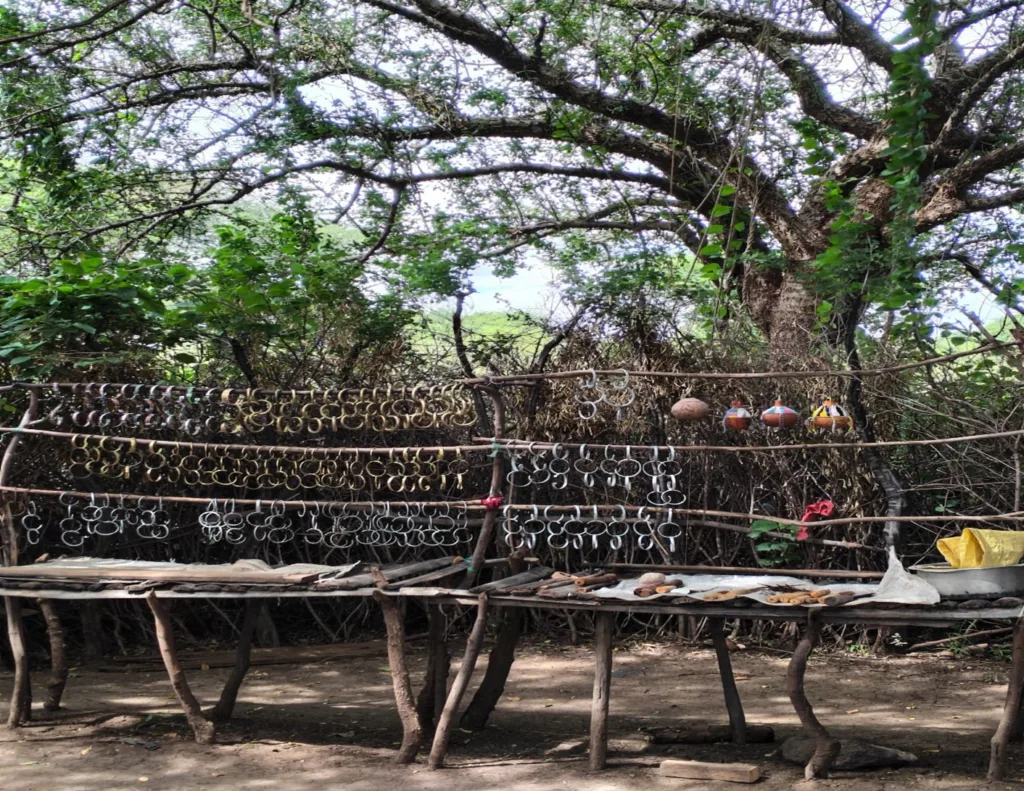Shift in Altitudinal Range of Azteca Ants Inhabiting Cecropia Trees
The global land surface temperature has increased about 0.27 °C per decade since 1979. This gradual increase in temperature is likely to induce rapid shifts in plant and animal distributions. It has been suggested that climate change will trigger shifts of species distribution towards higher elevations. For instance, altitudinal shifts in distribution and abundance of vertebrate species have been reported in Monteverde, Costa Rica. Given this previous evidence, we decided to investigate if the symbiotic Cecropia-Azteca ant relationship along its natural altitudinal range has been affected by recent climate change.

Azteca ants nest inside the hollow interior of myrmecophytic Cecropia species and feed on the rich glycogen Mullerian bodies that the plants produce. In return, it is theorized that the ants increase the fitness of Cecropia by protecting it against herbivory and vine infestation. According to Longino (1989, Biotropica 21(2): 126-132) the symbiotic relationship between Azteca ants and Cecropia trees did not extend beyond 1400 m when he surveyed the Monteverde Pacific transect in 1985.
In light of the evidence of shifts in local climate in association with global warming and of related shifts in the altitudinal distribution of organisms – for the Monteverde area and elsewhere – we expected an uphill shift in the range of the Cecropia-Azteca since the last report 26 years ago. To test our prediction we conducted an ant survey in June 2011 covering altitudes between 940 m and 1645 m along 17 Km in the same area as the survey in 1985. We tested for the presence of Azteca ants by knocking and shaking the Cecropia trees. When ants were present they would be visible near the top of the tree or along the trunk. We used a four-meter pole, with adhesive tape attached to it, as a tool to collect the ants for further species identification. We found that seventeen Cecropia trees contained Azteca ants while 34 did not. The highest elevation of Cecropia-Azteca presence observed was 1540 m, which is 140 m above the range reported in Longino’s survey. Nine Cecropia trees found within 1401 m – 1595 m housed ants.
Our study suggests that the range of the Cecropia-Azteca symbiotic relationship has shifted 140 m uphill since 1985. This apparent uphill expansion of the Cecropia-Azteca ant relationship concords with the general trend of species distribution shifts attributed to climate change. It is interesting to note that the uphill shift in the Cecropia-Azteca relationship we found falls within the same time frame in which mean minimum temperatures have increased about 2°C and changes in the altitudinal range of other species were observed (Pounds et al. 1999, Nature 398: 611-615). In summary, our study provides preliminary evidence that complex symbiotic relationships, such as that of the Cecropia-Azteca, may also be following uphill colonization events influenced by climate.
Authors: Ashley L. Vizek and Macy Brusich (SFS alumni), J. Edgardo Arévalo, Ph.D., and Geovanny Mora-Pineda (Universidad de Costa Rica graduate student)
Full reference: Ashley L. Vizek, Macy Brusich, J. Edgardo Arévalo and Geovanny Mora-Pineda. 2012. The shift in altitudinal range of Azteca (Hymenoptera: formicidae) ants inhabiting Cecropia (Urticaceae) trees in Monteverde, Costa Rica. BRENESIA 78: 93-95.
Related Posts

Restoration on a Cinder Cone: A Syntropic Story

